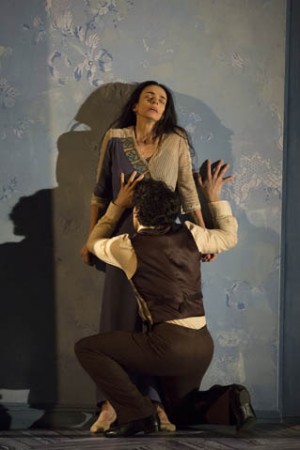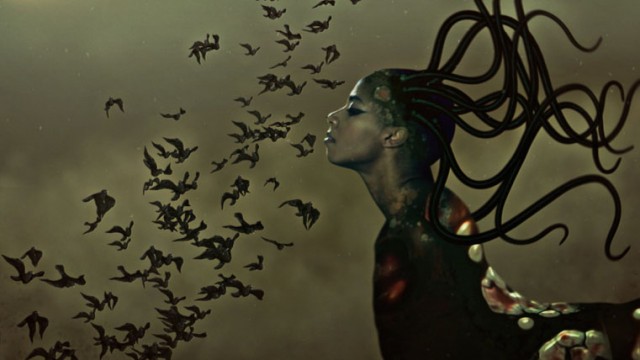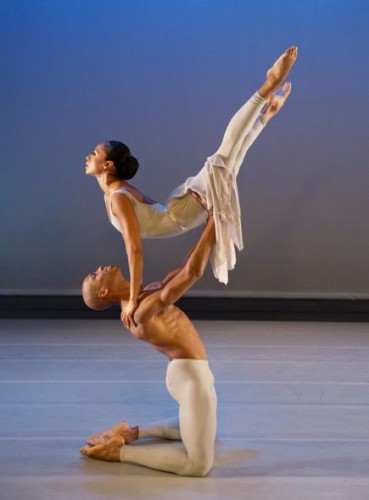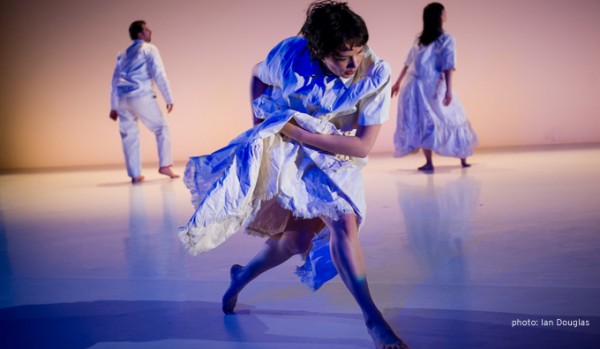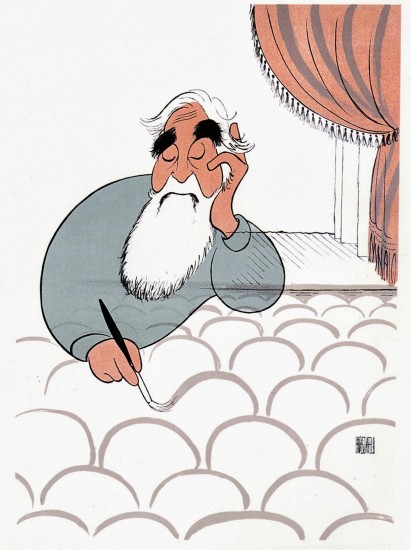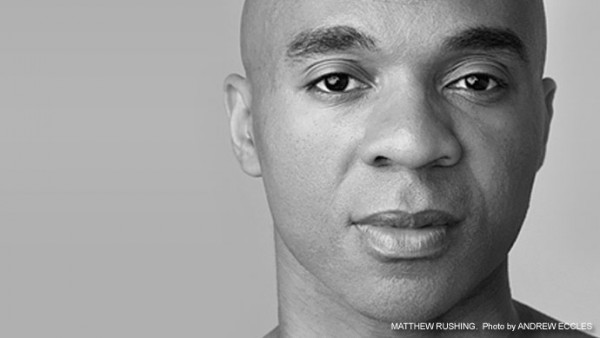
Matthew Rushing will be celebrated in special Alvin Ailey program at City Center on December 17
ALVIN AILEY AMERICAN DANCE THEATER
New York City Center
130 West 56th St. between Sixth & Seventh Aves.
Celebrating Matthew Rushing: Tuesday, December 17, 7:30
Season runs December 4 – January 5, $25-$135
212-581-1212
www.alvinailey.org
www.nycitycenter.org
Born and raised in the Inglewood section of Los Angeles, Matthew Rushing has now spent more than half his life with Alvin Ailey American Dance Theater. He joined the company in 1992, when he was just seventeen, and he quickly became a featured dancer. In 2008, artistic director Judith Jamison asked Rushing to choreograph a piece as part of her twentieth anniversary celebration, and he created Uptown, about the Harlem Renaissance, as a tribute for her. In 2010, Jamison named Rushing rehearsal director, a job he continues under artistic director Robert Battle, who took over the reins in 2011. Rushing also performs regularly as a guest artist with the company. It is still a thrill to see him take the stage, his every movement filled with emotion and the intense joy of the dance. In an August 2012 Dance magazine article entitled “Why I Dance,” Rushing wrote, “I don’t dance out of obligation, I dance out of an overwhelming feeling of necessity. Dance is literally a form of life to me, and I can’t imagine functioning without it!”
On December 17, as part of AAADT’s annual season at City Center, Rushing will be honored with the special program “Celebrating Matthew Rushing,” which will include Rushing performing in Ronald K. Brown’s Grace, excerpts from Ailey’s Love Songs and Pas de Duke and Rennie Harris’s Home, and the classic Ailey finale, Revelations. A gentle, soft-spoken man, Rushing recently spoke with twi-ny, answering questions about his storied career with great care, as if choreographing every thoughtful, carefully composed sentence.
twi-ny: On December 17, AAADT will be honoring you at City Center with a special tribute. Are you more nervous, scared, or excited about the evening?
Matthew Rushing: I think I would be more excited. There will be a little bit of nerves, because I think there’s a responsibility. This evening will be different from any other performance, because the way I see it, in any other performance, the audience is coming to see the Ailey company, but I would say that because it’s an evening celebrating the years I’ve been with the company, [laughs] the majority of the company will be coming to see me. So I would kind of feel like throughout the whole evening, all eyes will be on me, or at least the majority of the eyes. So I guess I would feel a certain responsibility that I normally wouldn’t feel. But I would also feel excited because I would feel support. I know that as well as the audience coming to see me, hopefully they will be coming to support me, so how special will that be to have a theater full of audience members coming to actually support you and celebrate you. So at the same time it’ll be exciting.
twi-ny: You’ll also be performing that night in Grace and what is being called “Matthew Rushing Highlights”; how did you go about choosing which pieces and excerpts you will perform at the event?
Matthew Rushing: The associate artistic director, Masazumi Chaya, came up with the initial program and presented it to me and asked me if there was anything that I wanted to change. I think the first change was, originally we were going to do Four Corners by Ronald K. Brown, and I requested that we do Grace. Chaya knew that I wanted to do a work by Brown because he’s one of these choreographers who has had a huge impact on my dance career and also me as a person. Chaya knew that Ron would have to be a part of this program, but I requested Grace because Grace was the first time I was introduced to working with Ron, and I’ve just had an incredible history with that ballet — what it’s taught me, the experiences I’ve had actually performing it, and even watching it. So that had to be part of the program.
The other highlights are works that I feel have been pivotal in my career, like A Song for You, which was originally choreographed for Dudley Williams, and I had the privilege and opportunity to be coached by Dudley Williams in A Song for You, as well as Pas de Duke, which was a huge turning point in my career because I was challenged with this role that was originally created for Mikhail Baryshnikov, and it taught me how to rely upon my own strengths and not try to imitate or be anyone else but actually really realize who I am as a dancer, what gifts I have to offer, and really focus and concentrate on those to help me articulate and communicate and have impact on the audience. And as well as the piece’s being choreographed by Mr. Ailey, that has a lot to do with it as well. The other piece is Home, which was choreographed by Rennie Harris. One of the reasons why I wanted to do this piece was because I was honored that he created this role for me when he created the ballet, and there’s something about the hip-hop, house culture that’s also had a huge impact on my life, growing up in New York, and for all these elements to come together — me respecting Rennie Harris as a choreographer, respecting the art form of hip-hop, and being honored that he would create a role for me, all that went into including this work in the evening.
Of course, Revelations has to be a part of it, because Revelations, I always tell people, this piece is kind of like part of who I am. It’s not just a work that I perform at the end of an Ailey evening. It’s something that I have a very close connection to and that feeds me, that inspires me, that changes me from performance to performance, so it just had to be a part of the evening as well.
twi-ny: You’ve now been with AAADT for more than twenty years and are currently the rehearsal director and a guest artist. How has that transition been?
Matthew Rushing: The transition has been very difficult. I think I’ve told anybody that asked me that question, I’ve always said that it’s difficult. I have yet to get to the point where I can say, “Oh yeah, I’m very comfortable, I’m thoroughly enjoying it.” No, not right now. It’s still a challenge. It’s stretching me in so many ways as far as being compassionate, leadership skills — it’s forcing me to organize my time better, it’s stretching me as an artist because I don’t have as much time as I used to to focus on my work and my dance, and I have to still be responsible for my work as far as the roles that I dance, but I have less time because the other time is devoted to the dancers and rehearsing the dancers and taking care of the dancers and making sure that they have what they need to be artists.
So I feel like I’m switching my hat a lot, and also my energy, time, and focus is split, much more than it used to be, so I feel like I’m never in a comfortable place. I often feel like I’ve missed the mark that I’ve set for myself, but I try not to get frustrated; I try to kind of dust myself off and give it another try, but, like I said, I think I’m still finding myself in it. That would be the most honest answer, that I’m still trying to find myself in this rehearsal director slash guest artist role.
twi-ny: In August 2012 you wrote, “I dance out of an overwhelming feeling of necessity,” while also pointing out your age, as forty approaches. Are you anticipating any further changes?
Matthew Rushing: At this point, because of how things have developed, I’m at a point where I can’t make any assumptions. Things have happened in ways that I would never expect them to, so therefore I’m at a point where I’m just making myself open and available to whatever comes my way. I’m trying to make sure that I’m prepared for whatever comes my way by doing whatever work that’s given to me at the present moment, and I’m hoping that that work will help prepare me for the next step, but I have no idea . . . I do know it’s gonna be within this Ailey organization. This is my home. This is where I was birthed artistically. And I know this is where I want to end my dance career. So I just know I’m here at Ailey. Ailey is it for me. That’s my only definite. Everything else is just open, and I’m ready to receive whatever’s coming next.
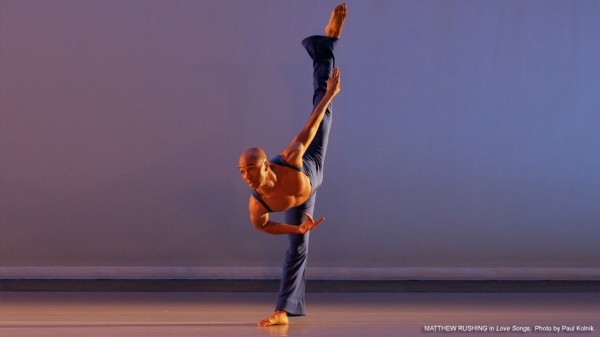
Matthew Rushing will perform an excerpt from Alvin Ailey’s LOVE SONGS at program honoring his ongoing career with the company
twi-ny: You’ve choreographed Acceptance in Surrender and Uptown for AAADT and, more recently, Moan for Philadanco. Do you have any more pieces coming up either for Ailey or another company? Do you get a different kind of satisfaction out of choreographing a work than dancing?
Matthew Rushing: Choreography is another struggle of mine, that I don’t feel absolutely comfortable in, so again, it’s just another thing that stretches me and I feel helps me grow. One of the reasons why I like to choreograph is I like to be creative. I usually get ideas that are motivated by music or themes or ideas and I like the work of trying to make them happen. Sometimes it doesn’t come as easily as I would like, and that’s where I get frustrated. Often I feel like I can’t come up with enough steps to articulate the ideas that I have. I usually can come up with ideas easily, but the articulation and coming up with the movement and style is very difficult for me. So the choreography, I feel, is more of a struggle than dance. Dance is something that I have always felt comfortable in, and I think I always will, so there is a huge difference between choreography and dance, and I feel much more comfortable in dancing than I do choreography, but I feel that choreography is another voice that I’m developing, as far as me having an impact on people and being creative.
twi-ny: In September 2011, you were one of a large group of dance people who performed in Continuous Replay with Bill T. Jones at New York Live Arts. What was that experience like? Many of the performers, including Mr. Jones, went au naturel, but you kept your shorts on. Were you tempted to take it all off?
Matthew Rushing: The experience of dancing with Bill T. Jones was absolutely awesome. The man is a genius. He inspired me, he opened my eyes to new ways of choreography. He taught me how to think differently, without even talking to me directly. It was me being able to be around his work and his process and his dancers that totally changed me. I love being around people who can say things that you’ve never heard before or be able to articulate things that you feel cannot be expressed through words. But somehow this man, this genius of a man, knows how to do that. I love him dearly, and I’m so excited that he’s choreographing D-Man in the Waters in the company, because he recently came to rehearsal and did the exact same thing to the other dancers as far as inspiring them and speaking into their lives. So the experience was awesome.
Um, dancing in the nude? No, I wouldn’t go there. I wasn’t even tempted. And I was so happy that he was accommodating enough [laughs] to allow me not to go nude. Even though I work hard on looking the best I possibly can . . . Nude? In front of thousands of people? No, not me. That’s just not me. I’m so glad that I’ve never had to do it here at Ailey as well.
